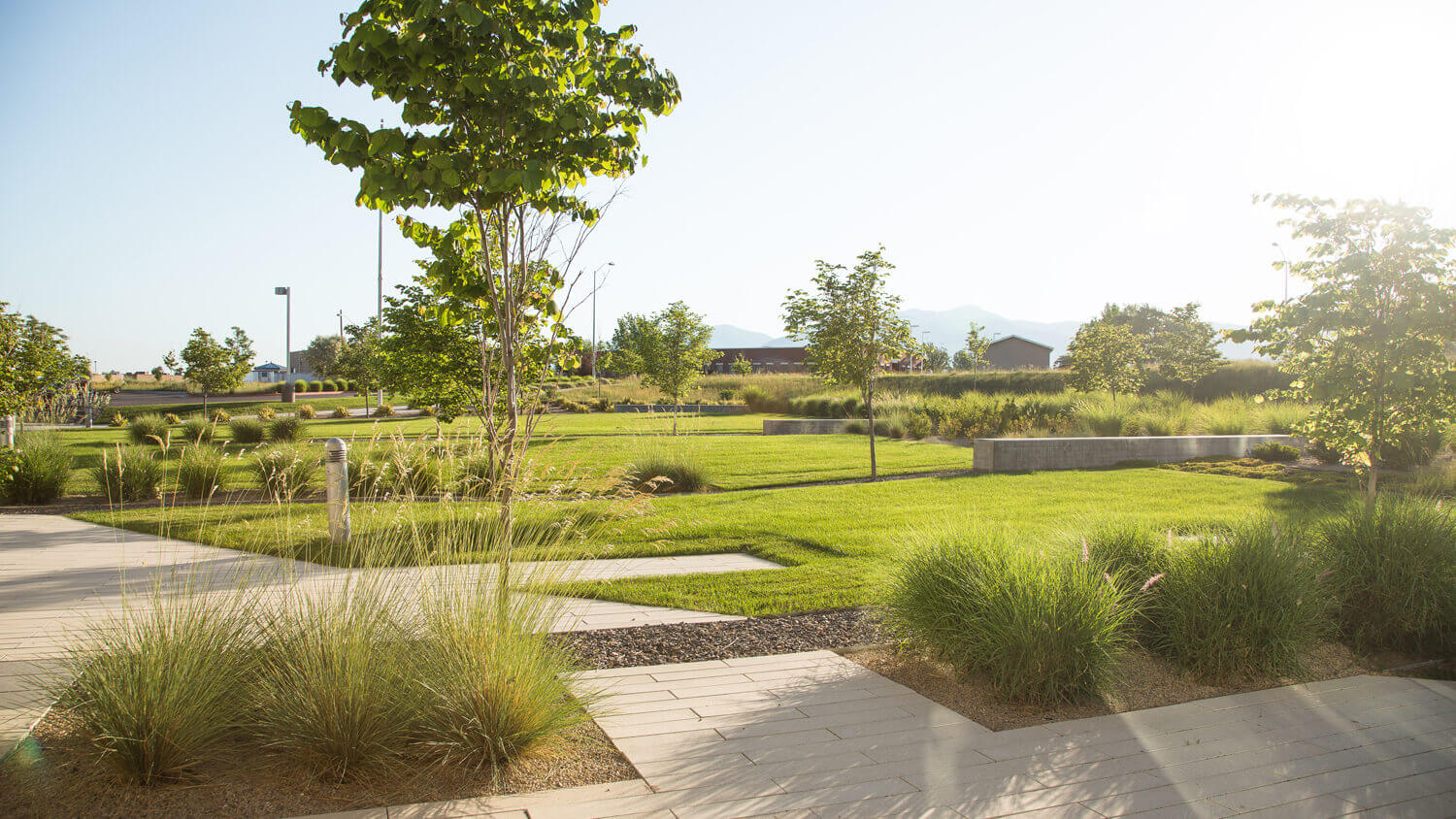The events of 2020 have called into question certain aspects of our society. In addition, global crises are having a real impact on commercial real estate. The expectations for public and private spaces are changing. And more is being asked of developers to make thoughtful and meaningful contributions to the built environment.
In order to promote health, equity, and social justice we need more (and better designed) shared outdoor spaces.
A Public Space Crisis
Millions of Americans lack access to quality outdoor space even though many studies have shown that spending time in green spaces reduces stress and improves physical and psychological wellbeing. Access to quality outdoor space throughout the country is also inequitable. Low-income households and people of color have significantly less access to these important spaces.
A historic lack of investment in public outdoor space has left us in a difficult situation. Overcrowded parks and beaches at the height of a global pandemic are telling signs of both the desperate need for time outdoors and the dismal lack of available public outdoor space. Likewise, public demonstrations beginning in city parks and spreading throughout city streets show how much effort is still needed to make these spaces truly fair and accessible to all people.
The same goes for the semi-public shared amenity spaces of private real estate developments. Generally only the highest value luxury projects include anything close to the quality and amount of outdoor space that is needed in order to have an impact in people’s lives. Market-rate and affordable projects have a disappointing lack of usable outdoor space, even when they need it the most.
How We See Each Other
As our country continues to become more divided, we are in dire need of opportunities to come together and recognize the things that unite us as people. Gathering spaces contribute to our society and enhance culture. They change how we see each other. In the book Public Space, authors Carr, Francis, Rivlin and Stone affirm, “In a well-designed and well-managed public space, the armor of daily life can be partially removed, allowing us to see others as whole people. Seeing people different from oneself responding to the same setting in similar ways creates a temporary bond.”
While social media continues to replace in-person interactions and the forum for discussing politics moves online, we are losing our ability to feel empathy and self-reflect. The majority of our interactions with people other than our family is only through a screen. These conditions can make it more difficult to understand the many complex and different experiences of others.
In contrast, as we spend time out in public spaces we have the chance to observe people who we normally wouldn’t have much interaction with. We can meet them with a friendly greeting, strike up a conversation about a shared experience, or just see them use the same space. Positive interaction between strangers in a public space is key to developing empathy and remembering that there is much that unites us as people.
A Blueprint for Better Shared Outdoor Spaces
According to research by the Joseph Rowntree Foundation, successful social spaces include the following:
1) Access and Availability: Shared outdoor spaces require good physical access, welcoming spaces and extended opening hours. Too many of these places are hard to get to and aren’t open when most working people are able to use them.
2) Invitations by Peers and Others: Public spaces should be embedded in social networks to encourage use. People need to have a reason or an invitation to be there.
3) Exchange-Based Relationships: Public outdoor spaces need to move beyond consumerism to the participation in the exchange of goods and services.
4) Choreography of Spaces: These places require discreet good design and management that also leaves room for self organization and choice.
5) Moving Beyond Mono-Cultures: Diverse groups and activities should be encouraged to share common spaces. This is paramount to how we see each other as people.
6) Avoiding Over-Regulation: Security and well-being are more likely to grow out of active use of shared outdoor spaces than increased surveillance.
The Challenge
In the past, both the public and private sectors have missed the opportunity to improve the culture of our society by failing to invest in outdoor spaces. The way we currently undervalue and overly restrict these key components of our culture is doing us harm. It’s time to let go of the old views on the design and management of shared outdoor spaces.
Only time will tell whether cities can successfully overcome this challenge. But, for private developers, the time to act is now. It’s clear that people seriously want more quality outdoor spaces. Provide this on your next development and you’ll see immediate impact.
